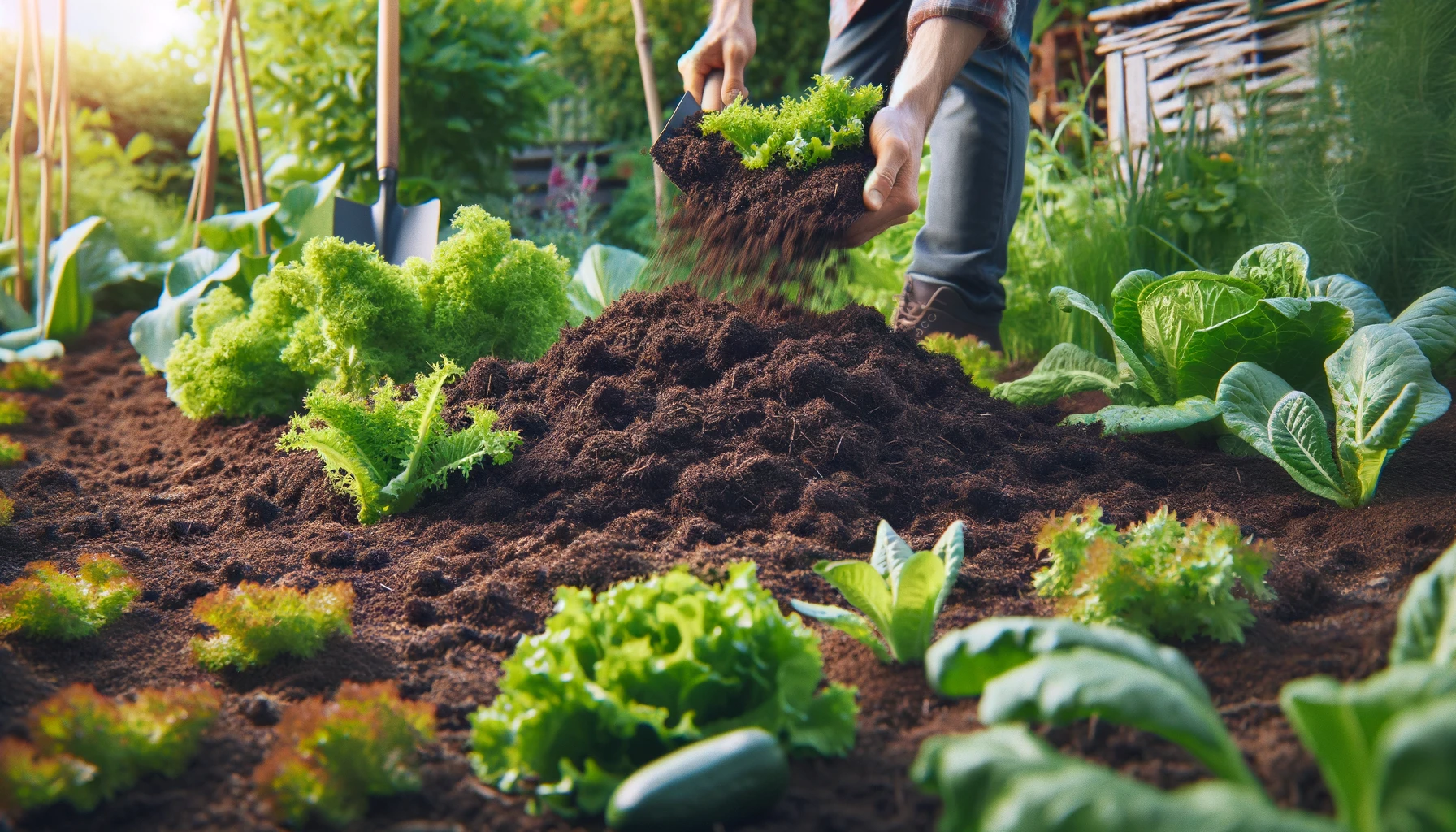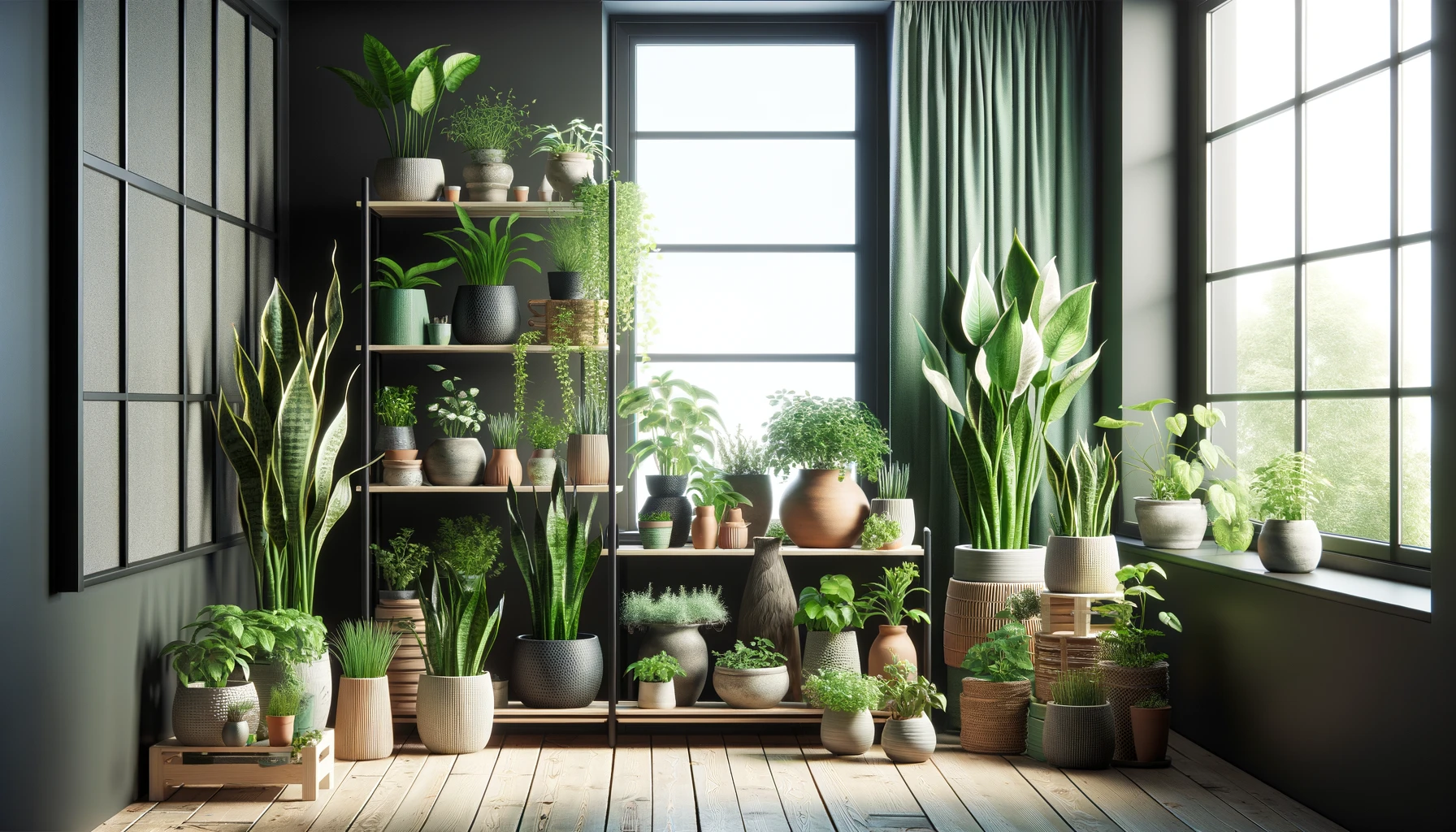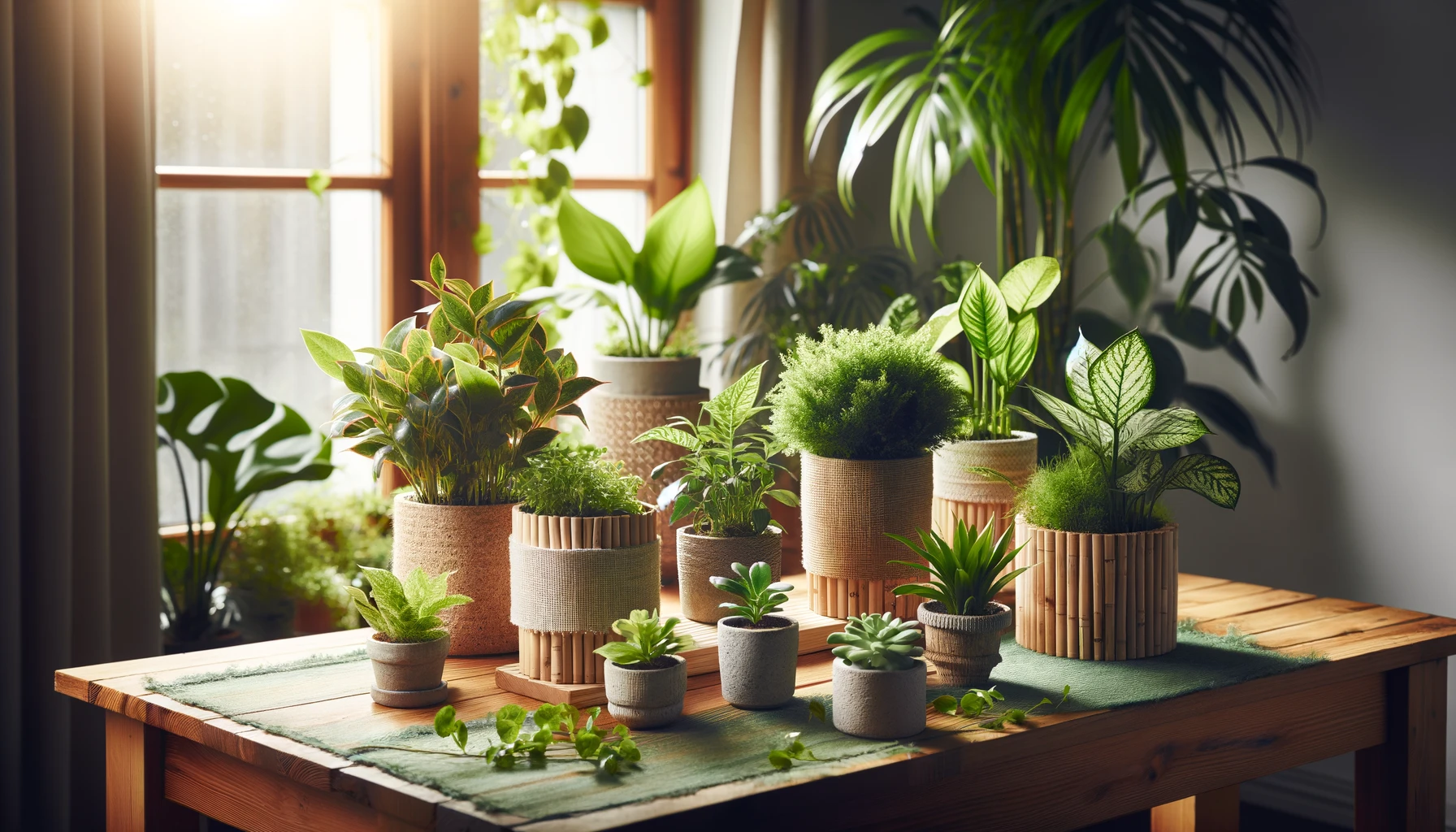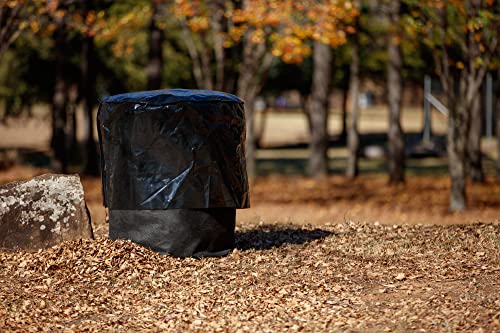This post contains affiliate links. If you buy something from one of our links we may earn a commission. Thanks

Discover eco-friendly pest control for indoor plants! Learn natural methods to keep your indoor garden thriving without harsh chemicals. Safe for you and the environment.
Eco-Friendly Pest Control for Indoor Plants Key Takeaways:
- Eco-Friendly Pest Control for Indoor Plants involves using natural methods like neem oil, diatomaceous earth, and insecticidal soap to manage pests.
- These solutions are safe for the environment and your health, ensuring your indoor plants thrive without the need for harsh chemicals.
Welcome to the world of natural pest control for indoor plants! Are you thinking of using harsh chemicals that harm the environment and your health? Please don’t!
In this guide, we’ll explore eco-friendly solutions to keep your indoor garden pest-free and flourishing. Join us on this green journey to a healthier, happier indoor oasis.
Eco-Friendly Pest Control for Indoor Plants
Indoor plants are not only beautiful but also beneficial for our health and the environment.
However, they can be vulnerable to pests, which can harm their growth and appearance.
The Problem with Chemical Pesticides
Traditional chemical pesticides can be effective but often come with negative side effects for both the plants and our surroundings.
Most are neural system toxins that kill bugs.
But we also can feel the effects because the toxins remain indoors and we also have nervous systems.
Many insects even develop resistance to them.
This is where eco-friendly pest control comes into play.
Natural pest control methods work because insects can’t develop a resistance to them.
They also are not toxic to humans and don’t pose a health risk like chemical pesticides.
The Eco-Friendly Solution
Using natural methods and substances to manage pests is safer for our indoor plants and the environment.
It reduces the risk of toxic chemicals in our living spaces and promotes a healthier ecosystem.
Exploring Eco-Friendly Pest Control
In this blog post, we’ll explore the importance of eco-friendly pest control and its benefits for indoor plants and the environment.
Understanding Pests in Indoor Plants
Indoor plants can enhance the aesthetics of our homes and improve air quality.
However, they are also susceptible to various pests that can negatively affect their health and growth.
It’s crucial to recognize the common pests and signs of infestation to protect our indoor greenery effectively.
Common Pests in Indoor Plants
Several pests commonly target indoor plants, including spider mites, aphids, mealybugs, scale insects, and fungus gnats.
Each pest has its unique characteristics and feeding habits, which can cause different types of damage to the plants.
Signs of Pest Infestation
Early detection of pest infestation is key to preventing severe damage to indoor plants. Some common signs to look out for include:
- Yellowing or wilting leaves: This can indicate a lack of nutrients due to pests feeding on the plant’s sap.
- Sticky residue or honeydew: Secreted by pests like aphids, this sticky substance can attract other insects and lead to sooty mold growth.
- Webbing or silk threads: Spider mites create fine webs on the undersides of leaves, which can be a clear sign of their presence.
- Visible pests: Some pests, like mealybugs and scale insects, can be seen as small bumps or cottony masses on the plant.
- Holes or chewed leaves: Caterpillars and other chewing insects can leave holes or ragged edges on leaves.
By understanding the common pests and their signs, we can take timely action to protect our indoor plants and maintain their beauty and health.
Understanding Pests in Indoor Plants
Indoor plants can enhance the aesthetics of our homes and improve air quality.
However, they are also susceptible to various pests that can negatively affect their health and growth.
It’s crucial to recognize the common pests and signs of infestation to protect our indoor greenery effectively.
Common Pests in Indoor Plants
Several pests commonly target indoor plants, including spider mites, aphids, mealybugs, scale insects, and fungus gnats.
Spider Mites
Spider mites are tiny arachnids that suck the sap from leaves, causing yellowing and webbing.
Aphids
Aphids are small, soft-bodied insects that feed on plant sap, leading to distorted growth and sticky residue.
Mealybugs
Mealybugs appear as white, cottony masses on stems and leaves, sucking the sap and weakening the plant.
Scale Insects
Scale insects are hard to spot, as they often blend in with the plant, but they can cause yellowing leaves and stunted growth.
Fungus Gnats
Fungus gnats are small, dark flies that thrive in moist soil, and their larvae feed on plant roots, potentially leading to root rot.
Eco-Friendly Pest Control Methods
Eco-friendly pest control methods offer a safe and sustainable way to protect indoor plants from pests.
These natural solutions help maintain a healthy environment for both the plants and the people around them.
Here’s a look at some effective eco-friendly pest control methods and how to use them:
Neem Oil
Neem oil is a natural pesticide derived from the seeds of the neem tree.
It is effective against a wide range of pests, including aphids, mites, and whiteflies.
To use neem oil, mix it with water and a few drops of dish soap to create a spray solution.
Apply this mixture to the affected areas of the plant, ensuring it covers both the tops and undersides of the leaves.
Diatomaceous Earth
Diatomaceous earth is a powder made from fossilized algae. It works by dehydrating and cutting the exoskeletons of insects, leading to their death.
To use diatomaceous earth, sprinkle it around the base of the plant and on the soil surface.
It can also be dusted on the leaves, but be sure to reapply after watering or rain.
Garlic
Garlic has natural insect-repellent properties. To make a garlic spray, blend a few cloves of garlic with water and strain the mixture.
Add this garlic water to a spray bottle and apply it to the plants. It’s particularly effective against aphids and other soft-bodied pests.
Insecticidal Soap
Insecticidal soap is a mild soap solution that can kill pests on contact. To make your own, mix a teaspoon of mild liquid soap with a liter of water.
Spray this solution directly onto pests or infested areas of the plant. It’s safe for most plants and effective against aphids, spider mites, and whiteflies.
Flying Insect Killer
For flying insects like fungus gnats, consider using yellow sticky traps. These traps attract and capture flying pests, reducing their population.
Place the traps near the affected plants to catch adult gnats and prevent them from laying eggs.
Insecticidal Oils
Horticultural oils, such as neem oil or mineral oil, can smother and kill pests.
Mix the oil with water as per the instructions and spray it onto the affected areas.
These oils are effective against scale insects, spider mites, and aphids.
Pepper Spray
Pepper spray is a natural deterrent for many pests. To make it, blend hot peppers with water, strain the mixture, and add a few drops of soap.
Spray this solution onto the plants to repel pests like spider mites and aphids.
Soap Spray
A simple soap spray can be made by mixing a few drops of dish soap with water.
This solution can help control soft-bodied pests like aphids and whiteflies.
Spray it directly onto the pests or the infested areas of the plant.
Microbial Insecticides
Microbial insecticides, such as Bacillus thuringiensis (Bt), are made from naturally occurring bacteria.
They target specific pests without harming beneficial insects or the environment. Follow the product instructions for application.
Tomato Leaf Insecticide
Tomato leaves contain compounds that can act as natural insecticides.
Blend tomato leaves with water, strain the mixture, and use it as a spray on affected plants.
This solution is particularly effective against aphids.
Botanical Insecticides
Botanical insecticides, such as pyrethrin, are derived from plants and are effective against a wide range of pests.
Use them carefully and according to the product instructions, as they can be potent.
Essential Oils
Essential oils like peppermint, eucalyptus, and lavender have insect-repellent properties.
Mix a few drops of essential oil with water and spray it onto the plants to deter pests.
Traps
Traps, such as sticky traps or pheromone traps, can help monitor and reduce pest populations.
Place them near the affected plants to catch pests like whiteflies and fungus gnats.
Oil Spray
An oil spray can be made by mixing a tablespoon of vegetable oil with a liter of water and a few drops of soap.
This spray can help control pests like aphids and spider mites.
Homemade Herbal Spray
Herbal sprays can be made from various herbs with insect-repellent properties, such as rosemary, thyme, and mint.
Boil the herbs in water, strain the mixture, and use it as a spray on affected plants.
By using these eco-friendly pest control methods, you can protect your indoor plants from pests while keeping your home and environment safe.
Table 1: Eco-Friendly Pest Control Methods
| Method | Description | Pests Controlled |
|---|---|---|
| Neem Oil | Disrupts insect growth, requires repeat applications. | Whiteflies, Thrips, Aphids |
| Diatomaceous Earth | Dehydrates and cuts the exoskeletons of insects. | Scales, Thrips, Aphids, Mites |
| Garlic | Repels various pests with its strong scent. | Aphids, Spider Mites |
| Insecticidal Soap | Kills pests on contact, safe for most plants. | Aphids, Spider Mites, Whiteflies |
| Plant Oil Extracts | Smothers insects when sprayed directly. | Scales, Thrips, Aphids, Mites |
| Pepper Spray | Deters a variety of pests with its spicy content. | Aphids, Spider Mites |
| Soap Spray | Similar to insecticidal soap, effective against soft-bodied pests. | Aphids, Whiteflies |
| Microbial Insecticides | Utilizes bacteria like Bacillus thuringiensis to target specific pests. | Fungus Gnat Larvae |
| Tomato Leaf Insecticide | Uses compounds in tomato leaves to ward off pests. | Aphids |
| Botanical Insecticides | Derived from plants, less toxic than chemical options. | Various Insects |
| Essential Oils | Natural oils with insect-repellent properties. | Various Insects |
| Traps | Sticky traps or pheromone traps to monitor and reduce pest populations. | Flying Insects |
| Oil Spray | Homemade mixtures using vegetable oil to smother pests. | Aphids, Mites |
| Homemade Herbal Spray | Blends of various herbs with insect-repellent properties. | Various Insects |
DIY Natural Pest Control for Indoor Plants
Creating your own natural pest control solutions is an eco-friendly and cost-effective way to keep your indoor plants healthy and pest-free.
Here are some tips and tricks for DIY natural pest control, along with recommendations for the best options available.
Tips and Tricks for Natural Pest Control
- Regular Inspection: Regularly inspect your plants for signs of pests. Early detection can prevent infestations from spreading.
- Isolation: If you detect pests on a plant, isolate it from others to prevent the pests from spreading.
- Proper Watering: Overwatering can attract pests like fungus gnats. Ensure your plants have proper drainage and only water them when necessary.
- Cleanliness: Keep the area around your plants clean and free of debris, as pests can hide and breed in clutter.
Homemade Indoor Plant Bug Spray
To make a simple and effective bug spray, mix 1 teaspoon of mild liquid soap with 1 liter of water.
Spray this solution directly onto the affected areas of the plant. The soap will break down the pests’ outer layer, causing them to dehydrate and die.
Top Natural Pest Control Recommendations
- Neem Oil: A versatile and effective natural pesticide that can control a wide range of pests.
- Diatomaceous Earth: A non-toxic powder that dehydrates and kills pests on contact.
- Essential Oils: Oils like peppermint, eucalyptus, and rosemary can repel pests when diluted with water and sprayed on plants.
Best Organic Options for Indoor Plants
- Insecticidal Soaps: These are made from natural ingredients and are effective against soft-bodied pests.
- Botanical Insecticides: Derived from plants, these insecticides are less toxic than chemical options and can target specific pests.
Safe Choices for Organic Insecticide
- Bacillus thuringiensis (Bt): A naturally occurring bacteria that is safe for plants and humans but lethal to certain pests.
- Pyrethrins: Extracted from chrysanthemum flowers, these compounds are effective against a variety of insects.
Easy Recipes for Homemade Plant Bug Spray
- Garlic Spray: Blend a few cloves of garlic with water and strain. The resulting garlic water can repel various pests.
- Chili Pepper Spray: Mix chili pepper powder with water and a few drops of soap. This spicy solution can deter many insects.
Table 2: DIY Natural Pest Control for Indoor Plants
| Method | Description | Application Tips |
|---|---|---|
| Regular Inspection | Check plants regularly for signs of pests. | Isolate infested plants. |
| Proper Watering | Avoid overwatering to prevent fungus gnats. | Ensure good drainage. |
| Pruning | Remove dead or infected leaves and stems. | Use clean, sharp tools. |
| Cleaning | Keep the plant area free of debris. | Remove fallen leaves promptly. |
| Soil Health | Use well-draining soil and add organic matter. | Avoid over-fertilizing. |
| Adequate Light | Provide the right amount of light for each plant. | Avoid direct harsh sunlight. |
| Air Circulation | Ensure good airflow around plants. | Use fans or open windows. |
| Humidity Control | Maintain appropriate humidity levels. | Use humidifiers or pebble trays. |
| Companion Planting | Grow plants together that naturally repel pests. | Research compatible plant pairs. |
| Quarantine New Plants | Keep new plants separate until you’re sure they’re pest-free. | Inspect new plants thoroughly. |
| Natural Predators | Introduce beneficial insects like ladybugs or lacewings. | Avoid using pesticides with predators. |
Eco-Friendly Alternatives on Amazon
Welcome to the world of eco-friendly alternatives for pest control!
In our quest for a healthier and more sustainable environment, we’ve curated a list of top-rated natural pest control products available on Amazon.
These solutions offer a safer way to protect your home and garden from unwanted pests.
Say goodbye to harsh chemicals and embrace these environmentally friendly options for a greener, cleaner living space.
Here are some eco-friendly pest control products available on Amazon:
BioAdvanced Organics Brand Houseplant Insect Killer
 Introducing BioAdvanced Organics Brand Houseplant Insect Killer, a ready-to-use solution that offers fast and effective control of common pests.
Introducing BioAdvanced Organics Brand Houseplant Insect Killer, a ready-to-use solution that offers fast and effective control of common pests.
- This 24 oz spray is designed to tackle a variety of insects including Aphids, Mealybugs, Scale Insects, Whiteflies, and Spider Mites, providing relief in just minutes.
- Not only does it act as an insecticide, but it also serves as a fungicide, helping to manage powdery mildew on houseplants, flowers, shrubs, and trees.
- Versatile in its application, this product can be used both indoors and outdoors to safeguard your houseplants, flowers, and shade trees.
- As an OMRI-listed formula, it is suitable for organic gardening, ensuring that you can maintain a healthy and natural environment for your plants. View it on Amazon
Earth’s Ally 3-in-1 Plant Spray
 Introducing Earth’s Ally 3-in-1 Plant Spray, a versatile solution for your gardening needs.
Introducing Earth’s Ally 3-in-1 Plant Spray, a versatile solution for your gardening needs.
This 24oz spray acts as an insecticide, miticide, and fungicide, offering comprehensive protection for both indoor houseplants and outdoor plants, gardens, and trees.
With a potent blend of botanical oils, it effectively targets soft-bodied insects like spider mites, aphids, whiteflies, mealybugs, leaf rollers, and scale, while also controlling and preventing common plant diseases such as powdery mildew, downy mildew, blight, canker, black spot, and leaf spot.
Earth’s Ally is committed to safety and sustainability.
The formula contains natural ingredients like thyme oil, rosemary oil, clove oil, and peppermint oil, making it safe for people, pets, and the planet. It is OMRI-listed, making it suitable for organic gardening.
Additionally, Earth’s Ally takes pride in being bee-friendly, with each formula independently tested and proven safe for the bee population. Protect your plants and contribute to a healthier environment with Earth’s Ally 3-in-1 Plant Spray. View it On Amazon
Nature’s Will 100% Pure Organic Neem Oil
 Presenting Nature’s Will 100% Pure Organic Neem Oil, a premium, cold-pressed, and unrefined solution for your gardening needs. This water-soluble concentrated oil is Non-GMO and perfect for both indoor and outdoor gardening, as well as greenhouses.
Presenting Nature’s Will 100% Pure Organic Neem Oil, a premium, cold-pressed, and unrefined solution for your gardening needs. This water-soluble concentrated oil is Non-GMO and perfect for both indoor and outdoor gardening, as well as greenhouses.
Nature’s Will Neem Oil is completely pure and free from any toxic chemicals, ensuring the safety and health of your plants and vegetables. In cooler temperatures, the oil may solidify, but it can easily be thawed by placing it in warm water or outside in a warmer environment.
Directions for Use: Mix 1 oz of Neem Oil with 1 gallon of water and add ½ oz of liquid dish soap. Apply the solution to your plants every 7 days, preferably in the early morning or late afternoon to avoid direct sunlight. Always conduct a spot test on your plants before full application and shake the mixture well before use.
Cautions: Keep this product out of reach of children. After handling, wash your skin thoroughly. Avoid contact with eyes or skin, and seek medical advice if irritation occurs.
Ingredients: This product contains Azadirachtin Indica Neem Seed Oil, ensuring a natural and effective solution for your gardening needs. View On Amazon
Mighty Mint 32 oz Peppermint Plant Protection Spray Kit
 Introducing Mighty Mint 32 oz Peppermint Plant Protection Spray Kit, your solution for safeguarding your plants from various pests.
Introducing Mighty Mint 32 oz Peppermint Plant Protection Spray Kit, your solution for safeguarding your plants from various pests.
This easy-to-apply and clean-up formula is safe for use around people and pets when used as directed.
Crafted with powerful, plant-based ingredients, this spray is made with natural, US-sourced peppermint oil.
It’s effective against plant pests such as gnats, spider mites, aphids, and more, providing your plants with the protection they need to thrive. View On Amazon
Please note that the effectiveness of these products may vary based on the specific pest situation and the environment in which they are used. Always follow the instructions provided by the manufacturer.
Eco-Friendly Alternatives at Home Depot
Home Depot and other garden centers often carry a range of eco-friendly pest control products.
Look for products labeled as organic or natural, and check the ingredients to ensure they align with your eco-friendly goals.
By using these DIY natural pest control methods, you can keep your indoor plants healthy and pest-free without resorting to harsh chemicals.
Preventive Measures and Maintenance
Preventing pest infestations in indoor plants is easier and more effective than dealing with an infestation after it has occurred.
By taking proactive steps and maintaining a healthy environment for your plants, you can minimize the risk of pests.
Here are some key preventive measures and maintenance tips:
Regular Monitoring and Inspection
- Check Regularly: Inspect your plants regularly for signs of pests or diseases. Look for changes in leaf color, texture, or the presence of insects.
- Quarantine New Plants: Before introducing new plants to your indoor garden, quarantine them for a couple of weeks to ensure they are pest-free.
- Prompt Action: If you notice any signs of pests, take immediate action to prevent them from spreading to other plants.
Proper Plant Care and Maintenance
- Watering: Water your plants appropriately, as overwatering or underwatering can stress plants and make them more susceptible to pests.
- Pruning: Regularly prune dead or infected leaves and stems to prevent the spread of pests and diseases.
- Cleaning: Keep the plant area clean by removing fallen leaves and debris, which can harbor pests.
- Soil Health: Use well-draining soil and consider adding organic matter to improve soil health, which in turn supports plant health.
Creating a Healthy Environment for Indoor Plants
- Adequate Light: Ensure your plants receive the right amount of light for their specific needs, as healthy plants are better able to resist pests.
- Air Circulation: Good air circulation helps prevent the buildup of humidity around plants, which can attract pests.
- Humidity Control: Maintain appropriate humidity levels, as some pests thrive in overly moist environments.
- Companion Planting: Consider using companion planting techniques, where certain plants are grown together to repel pests naturally.
Table 3: Preventive Measures and Maintenance
| Measure | Description | Tips |
|---|---|---|
| Regular Monitoring | Check plants frequently for early signs of pest infestation. | Look for yellowing leaves, webbing, etc. |
| Proper Plant Care | Ensure optimal growing conditions for each plant. | Water, light, and temperature needs. |
| Healthy Environment | Create a conducive environment for plant growth. | Cleanliness, humidity control, etc. |
| Pest-Resistant Plants | Choose plants that are less susceptible to common pests. | Research before purchasing. |
By implementing these preventive measures and maintaining a healthy environment for your indoor plants, you can significantly reduce the likelihood of pest infestations and ensure your plants thrive.
FAQs: Eco-Friendly Pest Control for Indoor Plants
When it comes to keeping indoor plants healthy, understanding how to prevent and treat pest infestations is key.
Here are some frequently asked questions about eco-friendly pest control methods:
Q: What are the signs of pest infestation in indoor plants?
A: Common signs include yellowing or wilting leaves, sticky residue, webbing, visible pests, and holes or chewed leaves. Regularly inspect your plants to catch these signs early.
Q: How often should I apply eco-friendly pest control methods?
A: The frequency depends on the severity of the infestation and the method used.
For preventive measures, applying neem oil or insecticidal soap every 2-3 weeks can be effective.
For active infestations, you may need to apply treatments more frequently, such as once a week, until the pests are controlled.
Q: Can I use these methods for all types of indoor plants?
A: Most eco-friendly pest control methods are safe for a wide range of indoor plants.
However, it’s always a good idea to test a small area of the plant first and wait 24-48 hours to ensure there is no adverse reaction.
Q: Are there any safety precautions to consider when using natural pest control?
A: While natural pest control methods are generally safer than chemical pesticides, it’s still important to use them responsibly.
Wear gloves when applying treatments, avoid inhaling powders or sprays, and keep them out of reach of children and pets.
Always follow the instructions for homemade or store-bought products.
Conclusion: Embracing Eco-Friendly Pest Control
Adopting eco-friendly pest control methods is a crucial step towards maintaining healthy indoor plants and a sustainable environment.
These natural solutions offer effective pest management while minimizing harm to our surroundings.
Let’s explore the significance of these methods and the importance of sustainable practices in indoor plant care.
The Importance of Eco-Friendly Pest Control
Eco-friendly pest control methods are not only safer for our indoor plants but also for our health and the environment.
By avoiding chemical pesticides, we reduce the risk of toxic exposure and contribute to a cleaner, greener planet.
Benefits of Sustainable Practices in Indoor Plant Care
Sustainable practices in indoor plant care go beyond pest control.
They include using organic soil, conserving water, and recycling plant waste.
These practices help create a balanced ecosystem within our homes, promoting plant health and environmental well-being.
Encouraging a Greener Future
As we move forward, it’s essential to continue exploring and adopting sustainable practices for indoor plant care.
By doing so, we contribute to a healthier environment and a more sustainable future for ourselves and generations to come.
Read more: Eco-Friendly Gardening
Resources
To further explore eco-friendly pest control methods for indoor plants, here are a few resources from cooperative extension sites that provide information on natural pest control for indoor plants:
- University of Minnesota Extension: This resource discusses plant oil extracts, neem oil, and Bacillus thuringiensis for managing common pests like scales, mealybugs, whiteflies, and aphids. It also provides precautions when using pesticides and tips for managing these pests (Managing insects on indoor plants).
- Missouri University Extension: This resource covers least-toxic control methods for managing indoor plant pests. It discusses biological controls like aphid predators and provides mechanical, cultural, and chemical control options for pests such as thrips, scale, mealybugs, and fungus gnats (Least-Toxic Control Methods to Manage Indoor Plant Pests).
- Colorado State University Extension: This resource provides detailed information on managing houseplant pests, including Bacillus thuringiensis for fungus gnat larvae control. It also covers common houseplant pests like greenhouse whitefly, mealybugs, spider mites, and other mites, with notes on using pesticides and management tips (Managing Houseplant Pests).
These resources offer a range of natural and least-toxic methods for controlling pests on indoor plants, emphasizing the importance of using pesticides safely and effectively.





